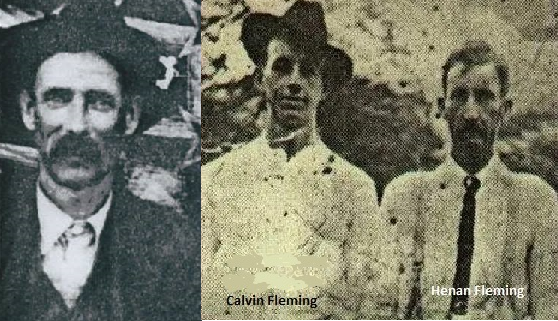Evidence for the Defense
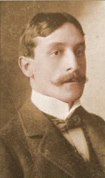
Bruce had called a total of 23 witnesses to the stand and just from reading the transcript, most had testified to events that did not help him to build his case. Instead, many of his witnesses had testified to events that seem to have helped the defense present their case. Of the first 6 witnesses, only Jane Mullins had testified to anything useful to the Commonwealth attorney.
But on cross-examination, the defense lawyers had relentlessly pounded Jane. They had brought up the problem with Jane’s timeline, but mysteriously the transcript shows no follow-up questions to her given answer. Although on re-direct the prosecution asks a question about Jane’s horse. This is yet another anomaly in the transcript, if there were no follow-up questions about why it had taken nearly four hours for her to ride 7 miles, there would have been no reason for the question about the horse.
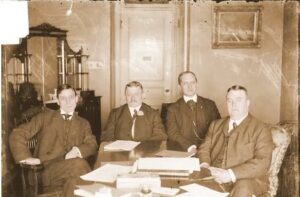
With the testimony of William Mullins, Commonwealth Prosecutor Robert Bruce had finished presenting his case in the trial of Dr. Taylor. But the question is, was Prosecutor Bruce successful in presenting his case?
The defense had asked her repeatedly about the statements she had made to multiple people about the massacre. They had even gone so far as to ask her about statements that she had made to the grand jury. Those statements contradicted what she had just testified about. By exposing all the contradictions between Jane’s testimony and what she had told family, friends, neighbors, and the grand jury after the massacre. Doctor Taylor’s defense lawyers had completely discredited Jane as a witness.
What’s more, with their relentless questioning, they had shaken and rattled Jane to the point that she had stated: “that she told what suited her and when it suited her.” Although we are left to guess what the defense lawyer had asked her, this statement and the sequence in which it occurred, give one the feeling that the statement may have been blurted out. Almost in anger.
Either way, this statement was damning. Jane Mullins had woven a tapestry of statements that began four hours after the massacre. This late arrival home had been the first out-of-place thread in her story. Where had she been, nobody had seen her on either side of the mountain, and why had it taken 4 hours for her to ride seven miles? The defense team had pulled at every loose thread in her story. And by the time of the Re-Cross Examination, the tapestry she had woven was threadbare.
Whatever the defense had asked it was enough for her to break down and to admit that everything she had said since she had arrived back home at 4 pm on May 14th was a tantamount lie. This is the reason that we assert that Jane Mullins had perjured herself on the witness stand.
Trying to Establish a Motive
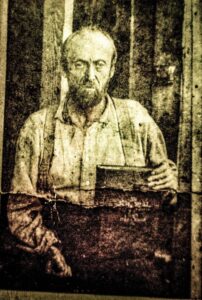
The prosecutor then presented 17 witnesses trying unsuccessfully to place Dr. Taylor at the crime scene and to establish a motive. Indeed, several of the prosecution witnesses had testified that Dr. Taylor had been seen in the vicinity of the Pound Gap. The road through the Pound Gap was the Main Road connecting Virginia and Kentucky and it was heavily traveled. The problem was that although several witnesses had reported sightings of Dr. Taylor, none of the witnesses were able to place Dr. Taylor in or around the Pound Gap on the weekend of the massacre.
Indeed, almost every testimony about Dr. Taylor appearing on or near the Pound Gap Road had occurred either the weekend before or the week after the massacre. Only one witness had reported seeing Dr. Taylor anywhere on May 14th, unfortunately, that witness had been Jane Mullins and now her testimony was in doubt.
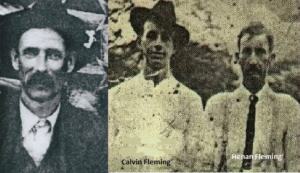
Prosecutor Bruce also tried to establish an unstated motif of animosity between Dr. Taylor and Ira Mullins. Although he was able to present several witnesses who testified to this animosity, on cross-examination, the stories these witnesses told fell apart. To a man, each of them admitted that the testimony they had given was about events that were more than two years old.
What’s more, is that each of these witnesses, when pressed by the defense, admitted that the testimony that they had given about the statements and actions of Dr. Taylor, had occurred during the normal execution of his duties working as a “Revenue Agent” for the US Marshall service. In fact, none of the witnesses had testified to any statement or action taken by Dr. Taylor against Ira Mullins over the last two years… Or since Ira had become a quadriplegic. However, several of the prosecution witnesses had testified that, whether through animosity or holding a grudge, Ira Mullins had been trying for nearly two years to hire someone to kill Dr. Taylor.
Our Questions
It is upon these well-documented facts, easily found when examining the transcript of the trial through the lens of hindsight. Over the course of our 10-year investigation, we continued to ask ourselves two questions, “Was Commonwealth Prosecutor Robert Bruce successful in presenting his case?” Or “Is it possible that there was no case to be made against Dr. Taylor, to begin with?”
The June Indictments
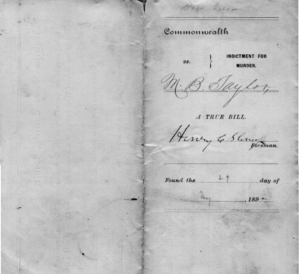
The evidence against Henry Adams, Dr. Taylor, and the Fleming brothers was circumstantial at best. A small pile of shell casing was found hidden under a pile of leaves. Henry, along with James Potter, had been named as a suspect at the time of the crime scene investigation. This was because of the type of ammunition casings found at the crime scene.
Interestingly, Henry was Indicted on June 3rd along with Taylor and the Fleming brothers. But James Potter was never indicted. Yet the transcript of the trial and the often-told story invokes the name of James Potter at least a dozen times. Yet Potter is not even called to testify even though the testimony is given that key information originated with James.
As we have just discussed, the prosecution had called 23 witnesses, yet only the testimony given by one witness was able to place Taylor and the Fleming brothers at the crime scene. That, of course, had been the unreliable and discredited testimony of Jane Mullins.
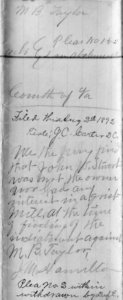
The indictment issued on June 3rd, 1892, by the May 26th Grand Jury had included Dr. Taylor and Calvin and Henan Fleming based solely upon the testimony of Jane. But that testimony was now in question, thanks to the answer that Jane had given to a question that the prosecution had asked in the redirect phase of Jane’s testimony. Jane stated that she had been told by James Potter that “Taylor and the Fleming boys were lying around her house trying to kill her.”
As we shall soon see as we begin to present the case of the defense, that answer is very similar to testimony from Sarah Blevins. Testimony that will place Jane’s testimony about Taylor and the Flemings in serious jeopardy.
.
.
.
Other Evidence
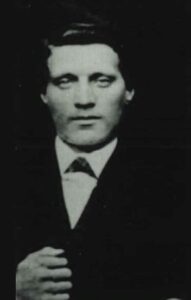
Then there are the shell casings and the rifle of Dr. Taylor. The original indictment dated June 3rd, 1892, had stated that Dr. Marshall Benton Taylor had used a gun valued at $5 to kill Ira Mullins. That indictment was quashed on a technicality.
Originally the complaint was made that one of the original May 26th grand jurors was an industrialist. When that ruling was denied by another jury, a complaint was made that the Forman of that jury had recently served on the grand jury. The indictment was thrown out and another indictment was sought from the July 26th grand jury.
This time the prosecution had the pistols owned by Dr. Taylor in evidence and the indictment reflected that. However, other than the change in date of the grand jury indictment and the word pistol nothing else had changed on the indictment. Which now stated that Dr. Marshall Benton Taylor had used a pistol valued at $5 to kill Ira Mullins.
Problems with the Case
Thanks to the overzealousness of the young and untried prosecutor, he immediately ran into problems with what he may have thought was an “open and shut case.” He had the man, he had the eyewitness, he had the evidence no matter how circumstantial, AND he had the murder weapons… Or did he?
Doctor Taylor Arrested
When Dr. Taylor had been arrested, he had been carrying his Gladstone or Doctors bag. According to newspaper articles, Inside the bag among his medical equipment and a few articles of clothing were “two of the biggest and ugliest pistols you ever saw.” These were of course Dr. Taylor’s famous twin pistols.
Dr. Taylor was brought back to stand trial on July 26th, 1892. He made his first appearance in court on August 2nd the trial was eventually moved from the county court to the circuit court which was to begin in September. The reason often given is that the defense was unprepared for the new indictment, but was that true?
Time to Prepare the Cases
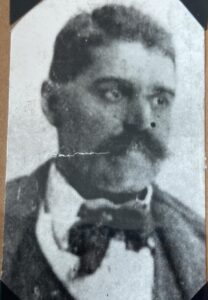
Prosecutor Robert Bruce had nearly 6 weeks to prepare his case for court. He presented his first 6 witnesses and, from reading the transcript, he expected that as far as he was concerned these witnesses would win his case.
The first two witnesses would talk about the crime scene investigation. The first would introduce the evidence against Dr. Taylor, the 6 spent bullet casings found at the crime scene. The transcript says that those casings were 45×75, but there is ample evidence that all 6 of these first witness statements have been altered. But we know for certain that the shell casings were not 45×75 due to the affidavit of I.N. Mills who tells us that they were indeed rimfire just as the often-told story tells us.
The next witness tells us the makeup of the party and the events leading up to the massacre as well as the first few moments as the shots rang out. John Harrison Mullins barely escaped telling this story.
The next two tell us about the event that happened in April of that year in which someone shot into Ira’s home in Virginia. We learn from both only part of the story, in fact, a great deal about it is left out.
But prosecutor Bruce is only looking for one bit of evidence from this tale. A bullet was recovered from the bed of Ira Mullins. Bruce asks Jemima Harris about this bullet, and she states that it looked like a 44-round to her. Bruce then asks if she was aware that Dr. Taylor owned a set of 44 pistols…
Although it is not recorded, it is safe to assume that Dr. Taylor’s pistols were introduced at this time. Those pistols were Colt .45 and used ammunition that was centerfire. They did not match the shell casings found at the crime scene nor did they match the statements that had just been made by Harris or the question about the pistols made by Bruce. In fact, this will be the last time in this case that we hear about the pistols.
Epic Blunder
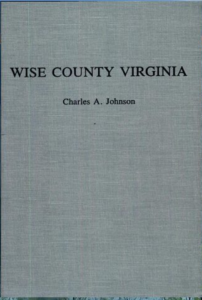
In any modern case if a blunder of this magnitude had occurred the defendant would have asked for a mistrial. We can only imagine that it had occurred here but was denied. We know that the defense had made a document of 12 exceptions about this case that was supposed to have been attached to this transcript and sent to the appellate court.
The 12 exceptions never made it to the appellate court, but we assume that this blunder concerning the pistols was on that document. After Jemima Harris, all the questioning is about the rifle. Even though the rifle had not been entered into evidence and would not officially become part of the case until the defense began wrapping up its case.
.
.
.
The Last of the First Six Witnesses
The next and last of the first 6 witnesses was of course the prosecution’s star witness Jane Mullins. As we have just shown, prosecutor Bruce may have been ill-prepared for this case, but the defense came prepared to hunt bear. We have already discussed the problems with Jane’s testimony and how the defense had shot her story so full of holes it could have been used as a colander.
The thing is that during the presentation of the case, the defense discredited Jane’s testimony using her own words. Now as they and we begin presenting the case of the defense, the defense will continue to discredit Jane and her testimony. And they do so with the introduction of Sarah and Mat Blevins.
Thank You
We at Kentucky Tennessee Living would like to thank you for watching our series on The Killing Rock. Don’t forget to hit that like button as the more likes we receive the more likely YouTube is to suggest our videos to other viewers. Also, to receive notice when we upload a new video be sure to subscribe and click the bell notification.
We thank you for continuing to support Kentucky Tennessee Living. As we bring to you the history of the Appalachian Mountains. We must remind everyone that the story names Killing Rock: The Oft Told Tale (s) and Killing Rock: The Untold Story and Killing Rock: the Trial and KillingRock: The Defense are all under Kentucky Tennessee Living copyright.
Source Information
A Narrative History of Wise County, Virginia By Charles A. Johnson Pub. 1938.
Copyright and Other Information
All photos are in the public domain unless otherwise noted. This includes photos dated before 1923. All other photos are used with permission or under the education fair use statute of the US copyright law.
Copyright 2022 Kentucky Tennessee Living
kytnliving.com/copyright-2/
Social Media Pages
For more about us, you can visit our Facebook page:
https://www.facebook.com/kytnliving
Our Twitter page:
https://www.twitter.com/KYTNLiving
Our YouTube Channel:
https://www.youtube.com/kytnliving
When we forget our past and who we are as a people, then we become who “they” say we are. ~~ David Sergent
I have attended the University of Kentucky. I have an Associates Degree from Hazard Community College and Technical School. I have also attended the University of Pikeville. I have taken several classes in Journalism as well as in the Appalachian History, Literature, and Sociology during my time at those schools.
I was born in Florida and grew up in Burdine, Kentucky. I have been married to David W. Sergent since May 4, 2013. I have two children and four grandchildren from a previous marriage. I currently live in Tennessee but my hope is to one day come back home to live in the beautiful mountains once more.


